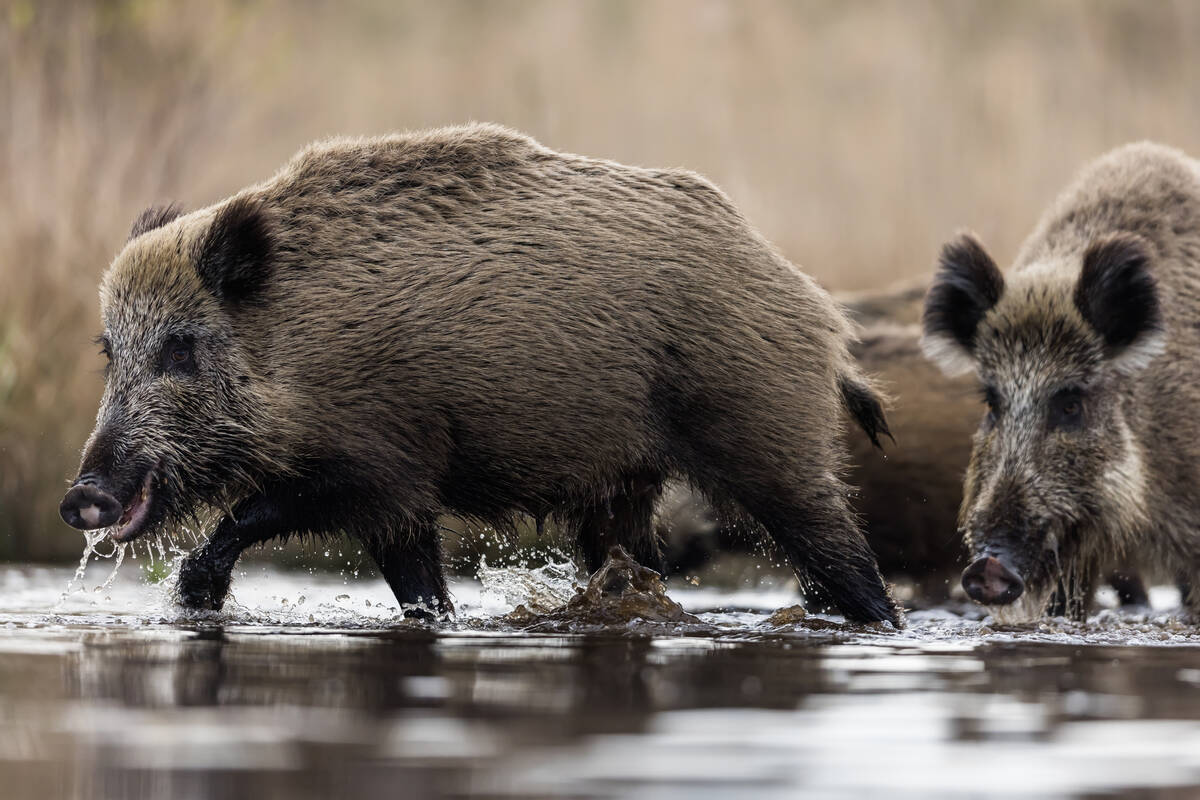Study examines what crops will no longer be viable unless drought resistant varieties are found or production methods change
BARCELONA, Spain (Thomson Reuters Foundation) — It will be-come impossible to grow some staple food crops in parts of sub-Saharan Africa without action to help farmers adjust to changing climate conditions, researchers say.
Corn, beans and bananas are most at risk.
In a study of how global warming will affect nine crops that make up half the region’s food production, scientists found that up to 30 percent of areas growing corn and bananas and up to 60 percent of those producing beans could become unviable by the end of the century.
Read Also

Manitoba bans wild boar possession
Manitoba has tightened the regulatory status of Eurasian wild boar in an effort to help fight back against invasive wild pigs.
Six of the nine crops — cassava, groundnut, pearl millet, finger millet, sorghum and yam — are projected to remain stable under mod-erate and extreme climate change scenarios.
“This study tells where, and crucially when, interventions need to be made to stop climate change destroying vital food supplies in Africa,” said Julian Ramirez-Villegas, the study’s lead author who works with the CGIAR Research Program on Climate Change, Agriculture and Food Security.
“We know what needs to be done, and for the first time, we now have deadlines for taking action.”
For example, the study warns that 40 percent of corn-growing areas will require “transformation,” which could mean changing the type of crop grown, or in extreme cases, abandoning crop farming.
Sorghum and millet, which have higher tolerance to drought and heat, could replace corn in most places under threat.
However, there is no viable crop substitution for .5 percent of corn-growing areas, which is equal to two million acres in South Africa that now produce 2.7 million tonnes, the study said.
In a few places, the need to adapt to climate change is already urgent, the researchers said.
Banana-growing regions of West Africa, including areas in Ghana and Benin, will need to act within the next decade, because the land is expected to become unsuitable for bananas by 2025.
As well, corn-growing areas of Namibia, Botswana, Zimbabwe and Tanzania also have less than 10 years left to change tack under the most extreme climate change scenarios, the study added.
“If we don’t do anything now, farmers are no longer going to be able to grow certain crops in certain sites,” Ramirez-Villegas said.
“But we know there are several adaptation options … with which farmers should be able to carry on growing these crops for a longer period of time than we project.”
The options begin with shorter-term actions such as improving irrigation and weather information services for farmers and developing new varieties of corn and beans that can better tolerate heat and drought.
Such measures are already underway in parts of Africa, in-cluding the Drought Tolerant Maize for Africa initiative that has released 160 varieties and benefited up to 40 million people in 13 countries.
However, governments will still need to re-assess agricultural and food security policies to see whether bigger transformations are needed, such as switching to different crops or livestock.
If so, they will need to help farmers access markets or build processing and storage facilities for new crops.
CCAFS researcher Andy Jarvis, a co-author of the paper published in the journal Nature Climate Change, said adjusting national policies can take decades.
“Our findings show that time is running out to transform African agriculture,” he said.
“This will require not only increased funding but also a supportive policy environment to bring the needed solutions to those affected.”
A separate study by researchers from Brown and Tufts universities said scientists have overlooked how two important human responses to climate will affect food production in the future: the amount of land people choose to farm and the number of crops they plant.
Looking at Mato Grosso, a key soy-producing state in Brazil, they found that a temperature increase of 1 C was tied to substantial de-creases in crop area and double cropping and accounted for 70 percent of the overall loss in production. Only 30 percent was attributable to falling crop yields.
“If you look at yields alone, you’re not looking at all of the information because there are economic and social changes going on as well,” said Leah VanWey, a professor of sociology at Brown and one of the study’s senior authors.
“You’re not taking into account farmers’ reactions to climate shocks.”














